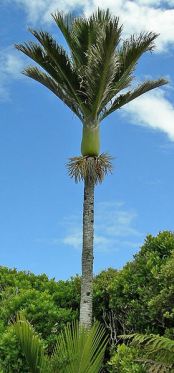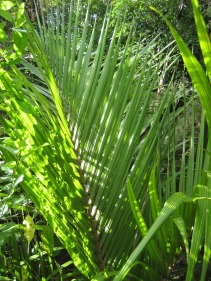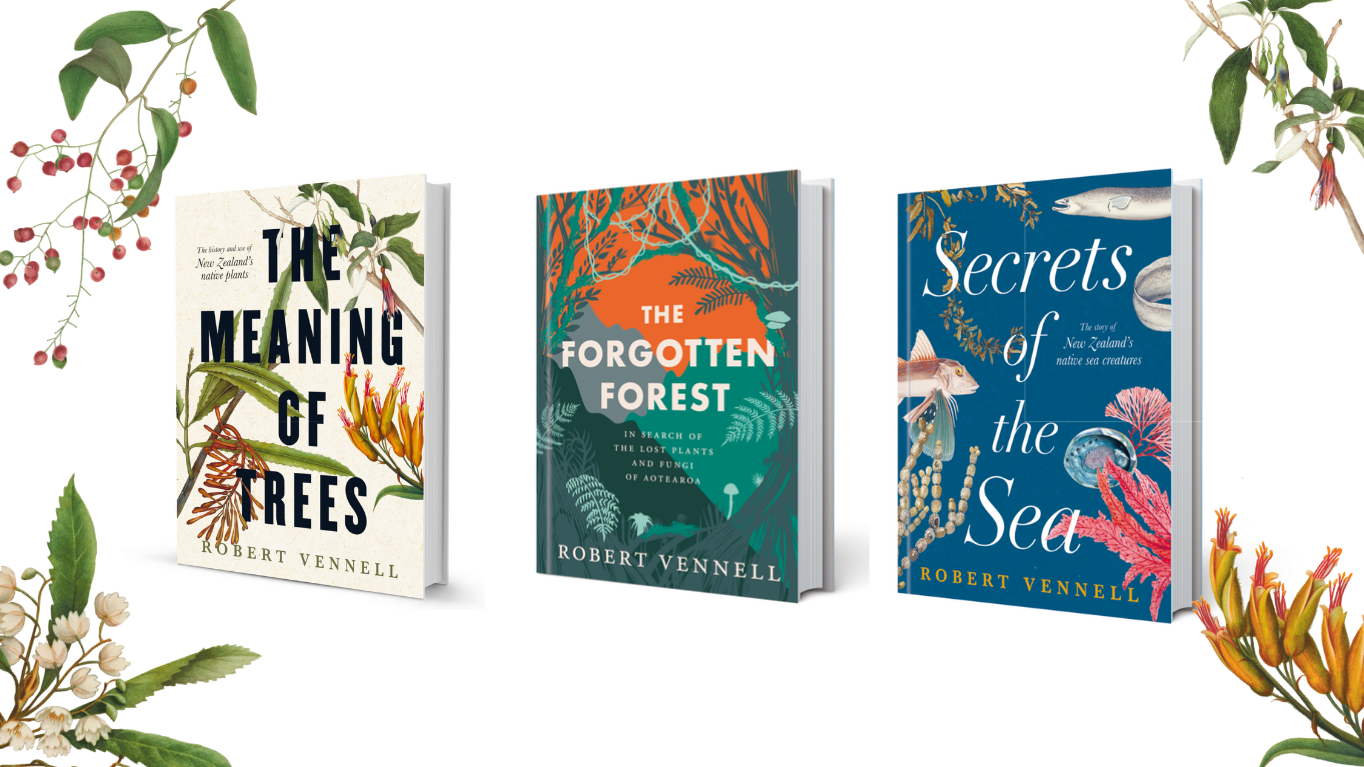History & Culture
In the early Miocene (around 23 million years ago) New Zealand had a much warmer climate and contained distinctive tropical elements in its flora. Palms were common at this time, and even included species of Coconut – such as the small fruited Cocos zeylanica. As a result of glaciation and cooling, these species have been removed from the landscape, with only one remaining representative of the palm family – the Nīkau. It holds the status of the world’s southernmost naturally growing palm.

It has been said that when the Polynesian ancestors of the Māori arrived in New Zealand they first attempted to find a coconut tree – which in the pacific is a vitally important food plant and serves a great number of practical utilities. Upon discovering the nīkau they remarked on its similarity but were dismayed to find it lacked the all-important feature of coconuts. Indeed, some translations of the word nīkau are ‘without nuts’ or ‘coconut barren’ in reference to this fact.
 The story is probably apocryphal, as the words Nī’au, niau and nikāu are used across the pacific to refer to the leaves of the coconut palm – and this was probably the same connection made by those early Polynesian explorers. Nīkau would also prove to be an incredibly useful and practical plant, with the fronds serving a similar role as they do in the pacific, being put to an array of uses in weaving and thatching.
The story is probably apocryphal, as the words Nī’au, niau and nikāu are used across the pacific to refer to the leaves of the coconut palm – and this was probably the same connection made by those early Polynesian explorers. Nīkau would also prove to be an incredibly useful and practical plant, with the fronds serving a similar role as they do in the pacific, being put to an array of uses in weaving and thatching.
The first recorded encounter between Europeans and the plant is noted in the journal of Sir Joseph Banks, the botanist on board Cook’s Endeavour. The crew ate the heart from the centre of the palm and Banks remarked that it made a delicious meal. Various accounts from European settlers describe the heart as excellent eating, and an important survival food for those lost in the bush. However harvesting of the heart kills the palm, leading to the nickname ‘Millionaire’s Salad.’ This fact, combined with its painstakingly slow growth meant that both Māori and Europeans attempted to avoid harvesting it in this way where possible.
The Nīkau’s distinctive shape and appearance lend a unique aesthetic to the New Zealand bush. It has been recognized by the New Zealand public as a cultural icon featuring prominently in artwork and sculptures. It holds an important place in the hearts and minds of many New Zealanders, including children, who have been known to use the discarded fronds as natural toboggans to race down grassy slopes.
Uses
 The heart of the palm, the root, the young shoots, the immature flowers and the immature green berries have all been used for food. The bright red mature berries, despite looking appetizing are actually incredibly dense and were used by settlers to shoot birds when ammunition was unavailable. They were also made into necklaces by Māori. The taste of the inner heart has been described in a variety of ways – juicy, sweet, succulent, and nutty. It has a slightly laxative effect and was used as a medical treatment for pregnant women, relaxing the pelvic ligaments before childbirth.
The heart of the palm, the root, the young shoots, the immature flowers and the immature green berries have all been used for food. The bright red mature berries, despite looking appetizing are actually incredibly dense and were used by settlers to shoot birds when ammunition was unavailable. They were also made into necklaces by Māori. The taste of the inner heart has been described in a variety of ways – juicy, sweet, succulent, and nutty. It has a slightly laxative effect and was used as a medical treatment for pregnant women, relaxing the pelvic ligaments before childbirth.
The fronds are incredibly versatile and were used to weave into hats, mats and baskets with the outer portion of the trunk being made into containers and pots. Leggings could be made by weaving fronds together for protection in scrubby undergrowth. They were also used extensively by both Māori and Europeans as thatching for roofs, providing an excellent source of waterproofing. A common whare design was a Mānuka stick framework thatched with Nīkau fronds and it has been said that this design could be as strong and watertight as if made from iron.


Hi, would you know anything about the term ‘nikau bread’ used by settlers in the 1890’s?
LikeLike
Hi amadaun23,
I don’t sorry, but am very intrigued by it. I wonder which part of the plant it refers to? I have eaten the flowers of nikau and they resemble a bland cauliflower. I have also eaten the unripe green berries which do not contain much flesh but have a somewhat nutty taste.
The heart of the palm is by all accounts delicious but from what I have read is rather fruity & nutty.
Interested to learn what you find out!
Robert from MOT
LikeLike